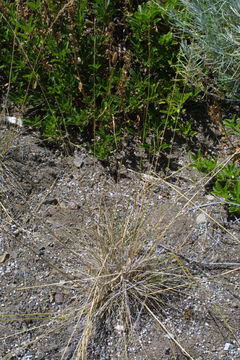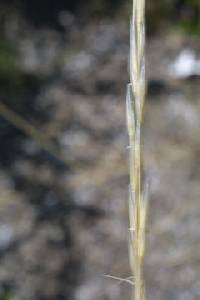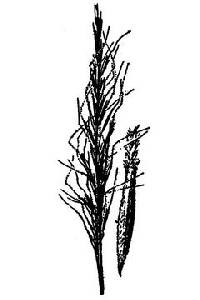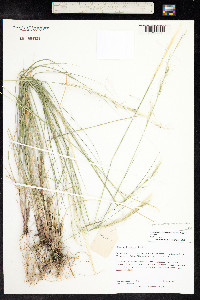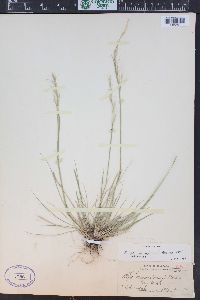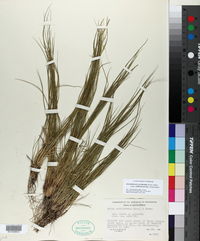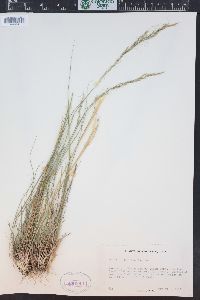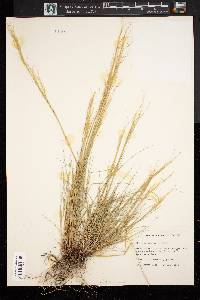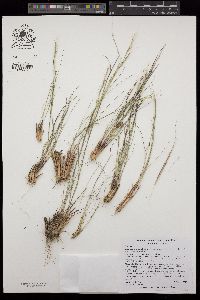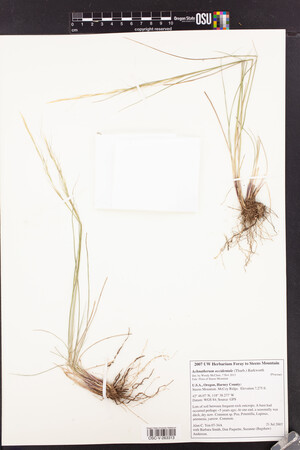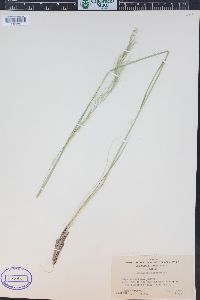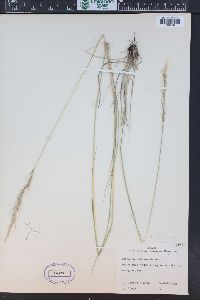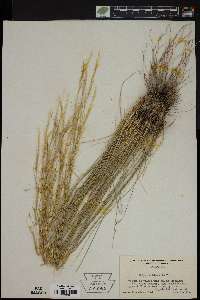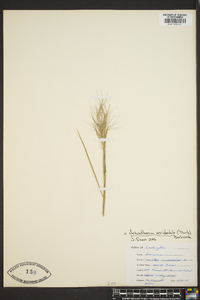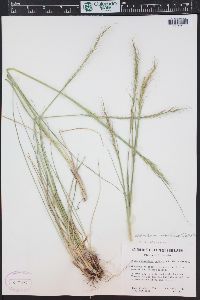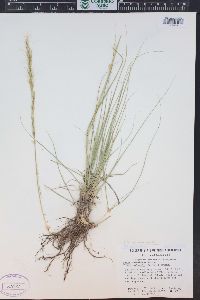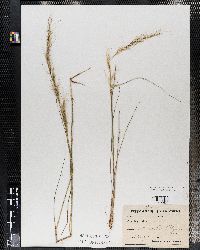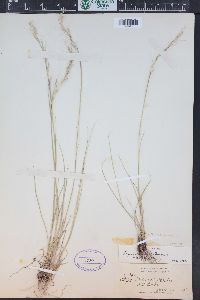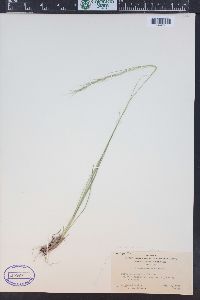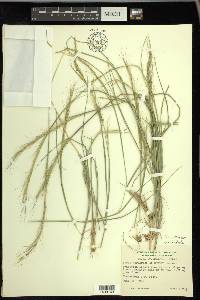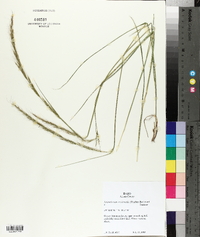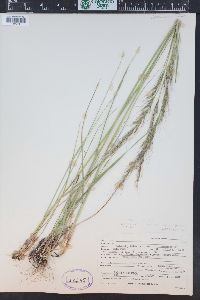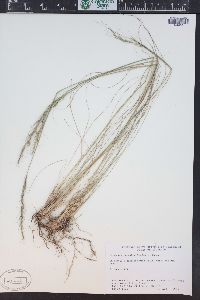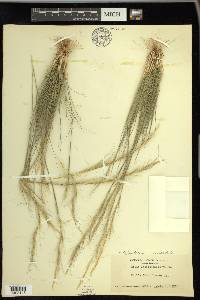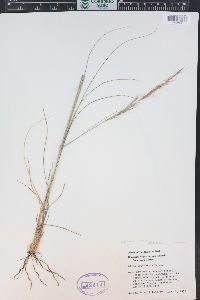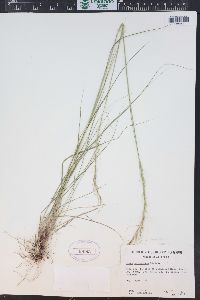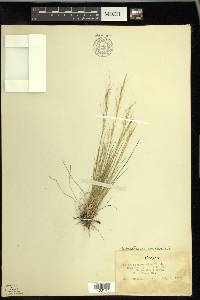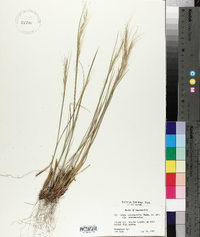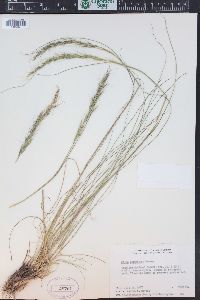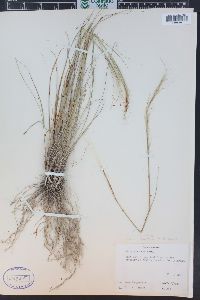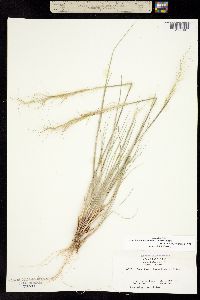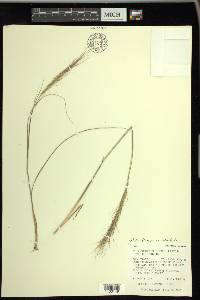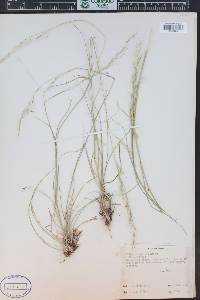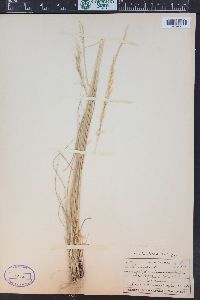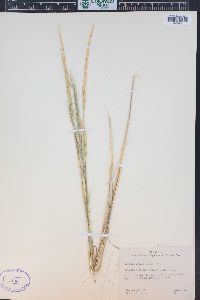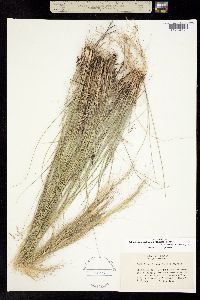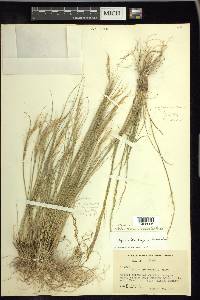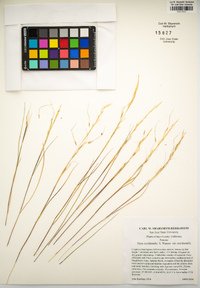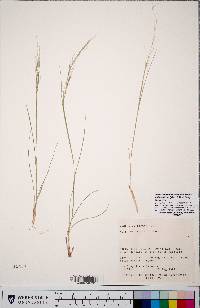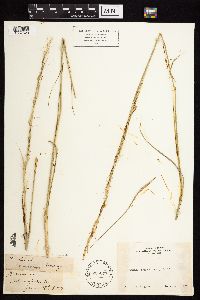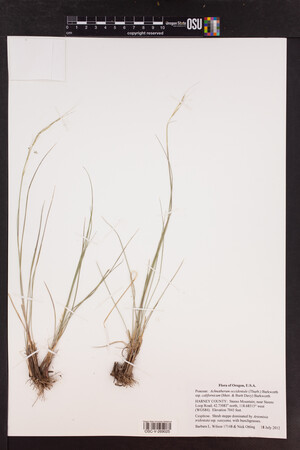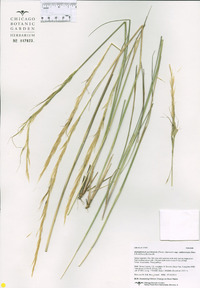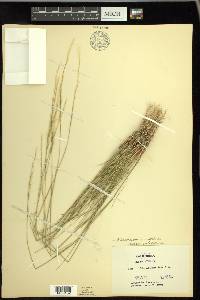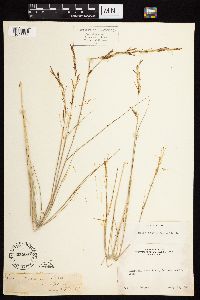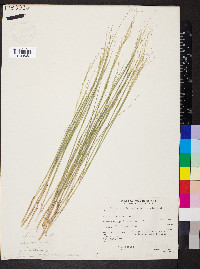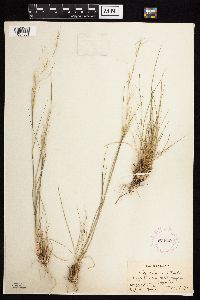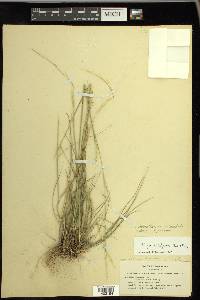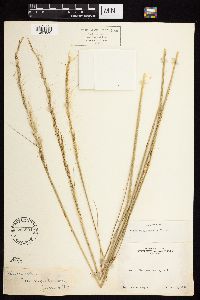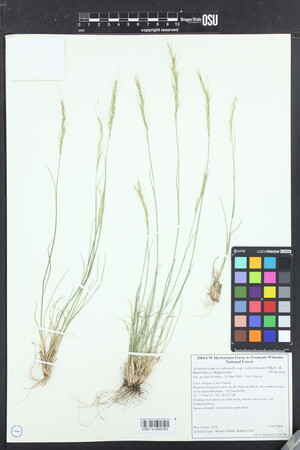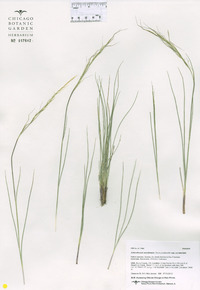Achnatherum occidentale
|
|
|
|
Family: Poaceae
western needlegrass, more...Western Rice Grass
[Stipa oregonensis Scribn., moreStipa stricta var. sparsiflora Vasey] |
Plants tightly cespitose, not rhizomatous. Culms 14-120(180) cm tall, 0.3-2 mm thick, inter-nodes glabrous or puberulent to densely pubescent; nodes 2-4, glabrous or pubescent. Basal sheaths glabrous or puberulent to densely pubescent, often ciliate at the throat; collars often with tufts of hair at the sides; ligules 0.2-1.5 mm, often ciliate; blades 0.5-3 mm wide and flat, or convolute and 0.1-0.8 mm in diameter, lax to straight. Panicles 5-30 cm long, 0.5-1.5 cm wide; branches appressed, straight, longest branches 1-7 cm. Spikelets appressed to the branches. Glumes subequal, 9-15 mm long, 0.6-0.9 mm wide; florets 5.5-7.5 mm long, 0.5-0.9 mm thick, fusiform, terete; calluses 0.8-1.2 mm, sharp, dorsal boundary of the glabrous tip with the callus hairs narrowly acute; lemmas evenly hairy, hairs 0.5-1.5 mm at midlength, apical hairs somewhat longer than those below, sometimes similar in length to those at the base of the awns, sometimes longer, apical lobes 0.3-0.5 mm, membranous; awns 15-55 mm, twice-geniculate, first 2 segments evidently hairy, terminal segment glabrous or partly to wholly pilose, sometimes scabrous; paleas 2.2-3.5 mm, 2/5-3/5 as long as the lemmas, hairs at the tip usually shorter than 1 mm, frequently extending beyond the apices, apices rounded; anthers 2.5-3.5 mm, dehiscent, not penicillate. Caryopses 4-6 mm, fusiform. 2n = 36. Achnatherum occidentale, which extends from British Columbia to California, Utah, and Colorado, varies considerably in pubescence and size. The three subspecies recognized here occasionally occur together. Dr, David Bogler, USDA NRCS PLANTS Database Perennials, Terrestrial, not aquatic, Stems nodes swollen or brittle, Stems erect or ascending, Stems caespitose, tufted, or clustered, Stems terete, round in cross section, or polygonal, Stem internodes hollow, Stems with inflorescence less than 1 m tall, Stems with inflorescence 1-2 m tall, Stems, culms, or scapes exceeding basal leaves, Leaves mostly basal, below middle of stem, Leaves mostly cauline, Leaves conspicuously 2-ranked, distichous, Leaves sheathing at base, Leaf sheath mostly open, or loose, Leaf sheath smooth, glabrous, Leaf sheat h hairy, hispid or prickly, Leaf sheath hairy at summit, throat, or collar, Leaf sheath and blade differentiated, Leaf blades linear, Leaf blades very narrow or filiform, less than 2 mm wide, Leaf blades 2-10 mm wide, Leaf blades mostly flat, Leaf blade margins folded, involute, or conduplicate, Leaf blades mostly glabrous, Leaf blades more or less hairy, Ligule present, Ligule an unfringed eciliate membrane, Inflorescence terminal, Inflorescence a contracted panicle, narrowly paniculate, branches appressed or ascending, Inflorescence solitary, with 1 spike, fascicle, glomerule, head, or cluster per stem or culm, Flowers bisexual, Spikelets pedicellate, Spikelets dorsally compressed or terete, Spikelet less than 3 mm wide, Spikelets with 1 fertile floret, Spikelets solitary at rachis nodes, Spikelets all alike and fertille, Spikelets bisexual, Spikelets disarticulating above the glumes, glumes persistent, Spikelets disarticulating beneath or between the florets, Rachilla or pedicel glabrous, Glumes present, empty bracts, Glumes 2 clearly present, Glumes equal or subequal, Glumes equal to or longer than adjacent lemma, Glumes 3 nerved, Lemma 5-7 nerved, Lemma body or surface hairy, Lemma apex acute or acuminate, Lemma distinctly awned, more than 2-3 mm, Lemma with 1 awn, Lemma awn 1-2 cm long, Lemma awn 2-4 cm long or longer, Lemma awned from tip, Lemma awn twisted, spirally coiled at base, like a corkscrew, Lemma awn twice geniculate, bent twice, Lemma margins inrolled, tightly covering palea and caryopsis, Lemma straight, Callus or base of lemma evidently hairy, Callus hairs shorter than lemma, Lemma surface pilose, setose or bristly, Palea present, well developed, Palea membranous, hyaline, Palea shorter than lemma, Stamens 3, Styles 2-fid, deeply 2-branched, Stigmas 2, Fruit - caryopsis, Caryopsis ellipsoid, longitudinally grooved, hilum long-linear.
|

